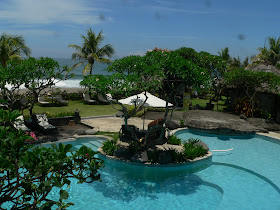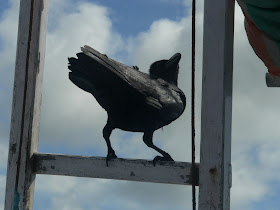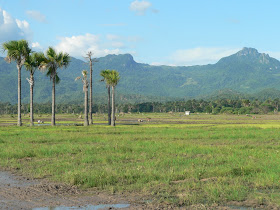After a full-on effort in the field in the Lesser Sundas (we missed just 4 of the 100+ regional and endemic specialty bird species) it's time to lay back and relax at our hotel, the Grand Balsani Suites, north of Seminyak on Bali. These White-headed Munias feed in the palms outside our room.
Streaked Weavers are here also, busily building nests in the palm fronds although it's the tail end of the wet season.
Anyone contemplating a holiday in Bali ought to avoid Kuta and head to the beach areas north of Seminyak, as we did. Right on the beach here, quiet and with all the island's attractions nearby.
A bit of luxury doesn't go astray after some of our at times basic accommodations in the Lesser Sundas.
The scene from our hotel balcony.
The beach behind our hotel.
Sunset from a beachside cafe doesn't go astray.
We went up to the highlands centre of Bedugul for the day, visiting a lakeside temple.
Streaked Weavers are here also, busily building nests in the palm fronds although it's the tail end of the wet season.
Anyone contemplating a holiday in Bali ought to avoid Kuta and head to the beach areas north of Seminyak, as we did. Right on the beach here, quiet and with all the island's attractions nearby.
A bit of luxury doesn't go astray after some of our at times basic accommodations in the Lesser Sundas.
The scene from our hotel balcony.
The beach behind our hotel.
Sunset from a beachside cafe doesn't go astray.
We went up to the highlands centre of Bedugul for the day, visiting a lakeside temple.










































